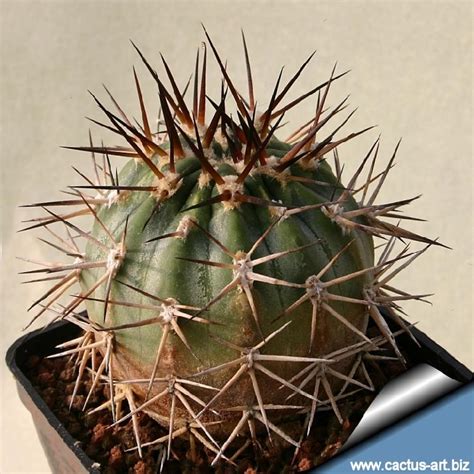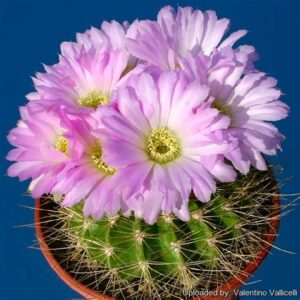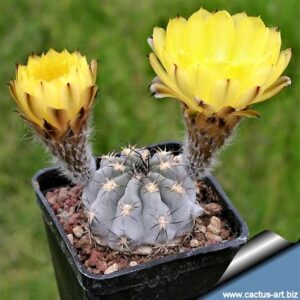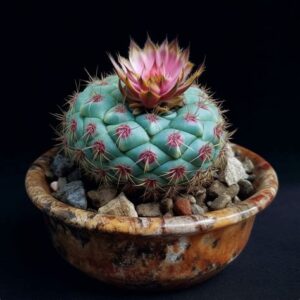Acanthocalycium griseum: a name that evokes visions of striking beauty and complex cultivation challenges. This exquisite cactus species piques the interest of both seasoned horticulturists and novice plant enthusiasts alike. Nestled within the diverse family of Cactaceae, the Acanthocalycium genus is characterized by its distinctive forms and stunning flowers. But, can you nurture it to display its full glory?
In this profile, we will delve into the intriguing attributes of Acanthocalycium griseum, examining its natural habitat, morphological characteristics, ideal care requirements, and potential challenges that may confront caretakers. After all, it is this intersection of beauty and complexity that makes observing these plants so rewarding.
Let us begin our exploration of Acanthocalycium griseum, which is commonly known as “the greyish Acanthocalycium.” This species stands out not just due to its appearance, but also because of the care it requires. Are you ready to embark on a journey of discovery?
Natural Habitat and Distribution
Acanthocalycium griseum finds its origins in the arid regions of Argentina, primarily inhabiting the dry and warm climates that characterize the country’s central and western provinces. Here, these plants thrive in rocky outcrops and clayey soils, adapting to environments where moisture is scarce, and temperatures can fluctuate dramatically. The native habitat contributes significantly to how these cacti have evolved over time, developing unique survival strategies that are captivating to study.
The ecosystems in which Acanthocalycium griseum thrives are intricate. The interplay of precipitation patterns, temperature variations, and even symbiotic relationships with other flora and fauna significantly influences its growth. Yet, the very environment that nurtures these plants also poses certain challenges, especially when attempting to replicate such conditions in cultivation.
The distinct geographical distribution of Acanthocalycium griseum offers essential insights into its adaptation. Its evolution has led to specialized mechanisms, such as a thick cuticle and an extensive root system, which allow the plant to survive prolonged dryness and absorb essential nutrients. Understanding its origins enables caretakers to create a more conducive environment for growth, paving the way for healthy specimens.
Distinct Morphological Characteristics
The allure of Acanthocalycium griseum is not limited solely to its flowers, though they are undeniably one of its most notable features. The plant exhibits fascinating morphological traits that contribute to its aesthetic appeal. Typically, a mature specimen can reach heights of up to 15 centimeters and can spread just as wide, making it a compact yet striking addition to any collection.
One of the most distinguishing features of Acanthocalycium griseum is its ribbed appearance. The plant usually presents with 9 to 12 well-defined ribs, which give it a unique sculptural quality. Between these ribs, clusters of spines emerge, creating a formidable yet visually stunning texture. The spines often vary in color, ranging from whitish to yellow hues, which adds an interesting dimensionality to the plant’s overall profile.
In terms of flowering, Acanthocalycium griseum does not disappoint. During the blooming season—typically spring through early summer—the plant produces delicate, funnel-shaped flowers that can span 5 to 8 centimeters in diameter. The blossoms often showcase a spectrum of colors, from pale yellow to vibrant pink, creating an eye-catching contrast against the plant’s greenish body. The fleeting nature of these blooms raises a playful question—is cultivating Acanthocalycium griseum more rewarding for its breathtaking flowers or as an enchanting specimen itself?
Optimal Care and Cultivation Techniques
Cultivating Acanthocalycium griseum successfully demands a nuanced understanding of its care requirements. While many may presume that cacti thrive on neglect, this species requires attentive cultivation to flourish. Let’s examine the essential aspects of its care regimen.
Soil requirements are paramount for Acanthocalycium griseum. A well-draining cactus mix, enriched with either sand or perlite, is ideal. This substrate mimics the natural conditions of its native habitat, ensuring that excess moisture does not pose a threat to the plant’s health. Repotting should occur only when necessary, as cacti do best when slightly root-bound.
Light exposure plays a critical role in the plant’s development. Acanthocalycium griseum flourishes under bright, indirect sunlight. Direct, intense light can scorch the plant’s surface, while too little light will impede its growth and flowering potential. The key is to strike a balance, ensuring that the plant receives ample light without subjecting it to excessive heat.
Watering is another vital component of its care. Adopting a “drench and dry” approach works best—this entails thoroughly soaking the soil and allowing it to dry completely before the next watering. Overwatering is a common pitfall that can lead to rot, while under-watering can hinder growth. Seasonal variations also influence watering frequency; reduced hydration may be necessary during the winter months when the plant enters dormancy.
Temperature and humidity remain relevant factors in successful cultivation. Acanthocalycium griseum prefers temperatures within the range of 20 to 30 degrees Celsius during the growing season, while tolerating cooler conditions in winter, provided there is protection from frost. Humidity levels should be kept low, mirroring its native arid environment.
Potential Challenges and Solutions
Despite its enchanting nature, growing Acanthocalycium griseum is not without its challenges. As previously mentioned, one of the main concerns for caretakers is the risk of overwatering—a common issue with many succulents. To combat this, employing a moisture meter can provide reassurance, ensuring that the soil remains at the appropriate level of dryness.
Pest infestations, particularly mealybugs and scale insects, pose another potential threat. Regularly inspecting the plant for signs of infestation is crucial. If detected, the use of neem oil or insecticidal soap can effectively eliminate these nuisances while remaining safe for the plant.
Fungus, particularly under high humidity conditions, can also affect the vigor of Acanthocalycium griseum. Good air circulation and appropriate watering techniques will not only bolster growth but also mitigate the chances of fungal growth. Remain vigilant and attentive, as such issues can shift from manageable to detrimental rapidly if left unchecked.
Ultimately, the challenge of cultivating Acanthocalycium griseum lies in understanding its specific needs and honoring its origins. It embodies a unique intersection of beauty and complexity that makes both observing and caring for it deeply gratifying.
Conclusion
Acanthocalycium griseum possesses an allure that captivates the hearts of many cactus enthusiasts. Its distinct morphology, beautiful flowers, and requirements for careful cultivation pose both fascination and challenge. Engaging with this species is not merely about cultivation; it is a journey into the heart of nature’s intricate designs. As the collector and caretaker, the question remains: can you rise to the challenge and cultivate Acanthocalycium griseum into a paragon of vitality? With diligence and understanding, the answer could very well be a resounding yes.





Leave a Comment